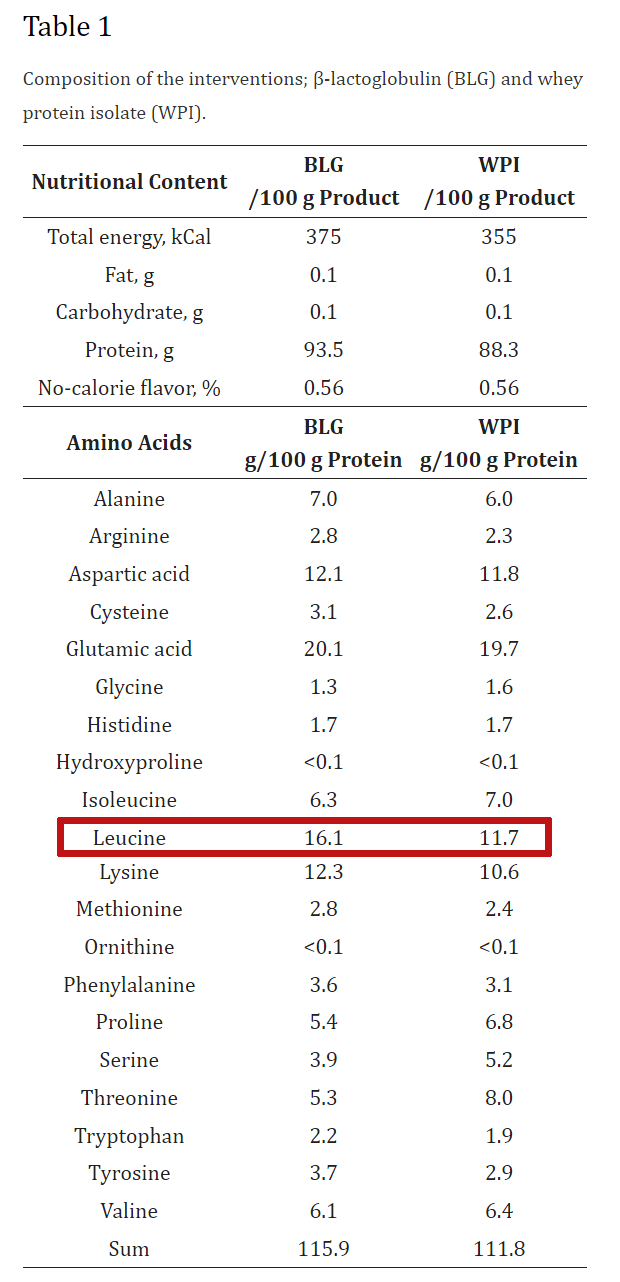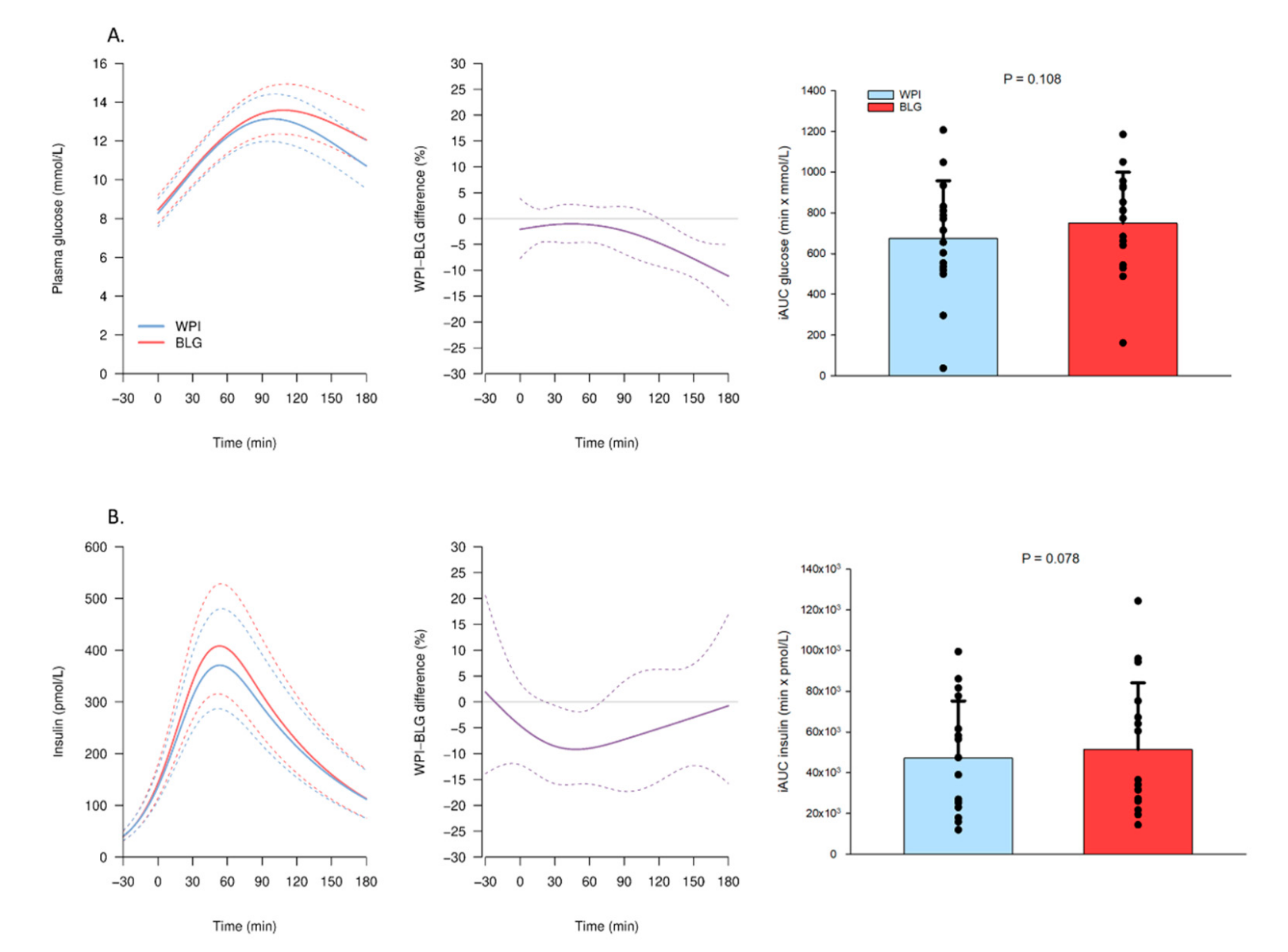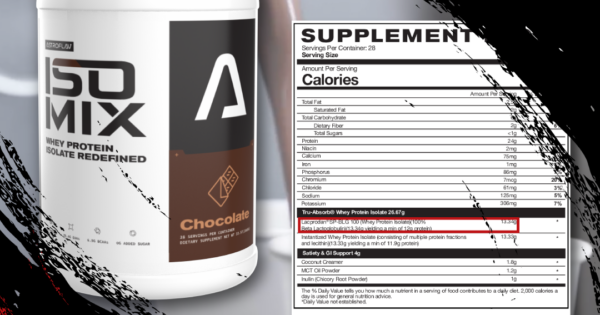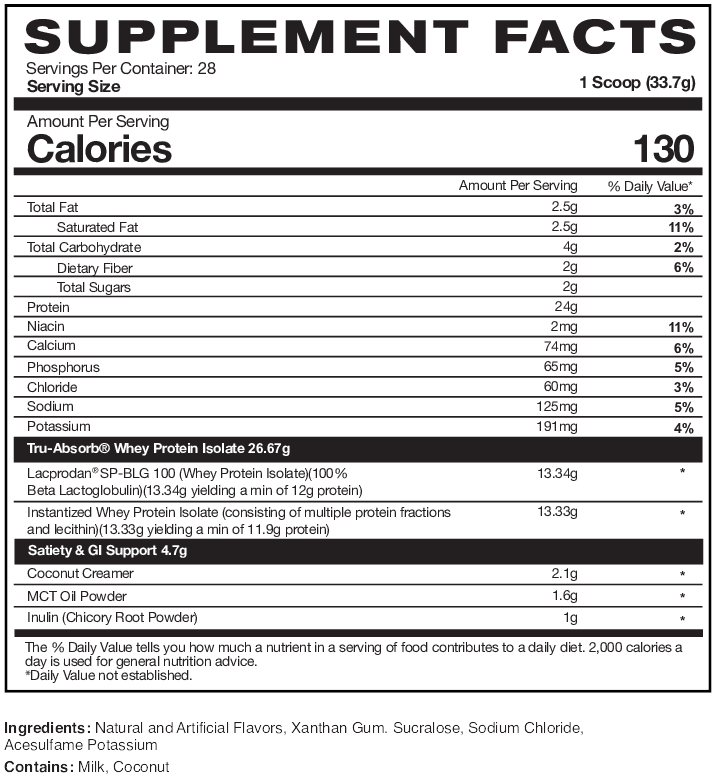New BLG-100 Reformulation is Out of This World
Lacprodan SP-BLG 100 (Whey Protein Isolate)(100% Beta Lactoglobulin)(13.35 yielding a min of 12 g protein) – 13.34 g
Beta-lactoglobulin (BLG) is a type of protein that makes up most of the whey fraction of milk protein, more specifically, roughly 60% by mass.[1,2] BLG is a complex of particular amino acids, joined to one another in a peptide chain. And, to be clear, we’re talking about a big molecule – BLG consists of 162 amino acids.[3]
As it turns out, using BLG over ordinary whey comes with some key advantages. First, Lacprodan has taken the industry by storm thanks to its radically improved taste, texture, and color compared to ordinary whey – the advent of BLG has opened up some magnificent new vistas of possibility for supplement formulators.
If you want a little lesson or refresher on the structural differences between proteins, check out Episode #108 of The PricePlow Podcast.
Contains significantly more (~45%) leucine than whey
From a nutritional perspective, the primary argument for using BLG is that it contains a lot more leucine than whey. Since leucine is the most anabolic amino acid,[4-9] this tells us right away that BLG should do a significantly better job at helping us build muscle in response to exercise.

BLG’s greater leucine content makes it an excellent protein for anyone who’s trying to reach their anabolic potential.[1]
Another advantage of BLG is its standardization for leucine. Whereas whey protein can consist of anywhere from 8.6% to 11.7% leucine by weight,[1,10] BLG contains 16.1% leucine by weight. That makes it a more reliable tool for muscle-building than ordinary whey, even when calorie-matched.
Research consistently finds that leucine can significantly improve the body’s rate of muscle protein synthesis[7-9] by activating an enzyme called mammalian target of rapamycin (mTOR).[4-6] Leucine can also inhibit the catabolism of muscle,[7] hence why so many weightlifters take leucine-containing branched-chain amino acids (BCAAs) prior to exercising.
What’s more, leucine requirements actually increase with advancing age,[11] so BLG is potentially a better choice for those who are concerned about the ravages of time impacting their performance and recovery.
When it comes to the IsoMix formula, there’s one specific, research-backed reason why Lacprodan BLG-100 is used alongside ordinary whey: combining the two helps us get 3 grams of leucine per serving.
- A 13.33 gram serving of whey protein usually provides roughly 1.15 grams of leucine
- But a 13.34 gram serving of Lacprodan BLG-100 gives us 2.15 grams of leucine
Together, these two proteins yield 3.3 grams of leucine per 1-scoop serving of AstroFlav IsoMix.
This is desirable because studies show that the required dose for maximizing muscle protein synthesis (MPS) stimulation is approximately 3 grams.[12-15]
The amount of leucine matters a lot – one study found that 3 grams of leucine plus a low dose of whey stimulates MPS to the same extent as a standard 25 gram dose of whey.[16] That’s because a 25 gram dose of ordinary whey only gets you about 2.3 grams of leucine – well under the 3 gram threshold.
Thus, AstroFlav did a very savvy thing and made sure that 50% of the protein in an IsoMix scoop is Lacprodan BLG, which gives enough extra leucine to get us over that 3 gram mark.
How much leucine do we need?
Taking a broader view, let’s consider the fact that the average daily leucine intake in the U.S. is roughly 8 grams per day.[17] So, just by switching half the IsoMix protein to BLG, AstroFlav is offering you a roughly 10% increase in your daily leucine consumption – a non-negligible difference.
If you’re worried about any potential downsides, don’t – it’s pretty much impossible to consume too much leucine. While there’s no official tolerable upper limit (TUL) for leucine, proposals range from 35 to 45 grams per day,[18,19] which is a truly ridiculous quantity. You’d have to go well out of your way to come anywhere close to achieving that – and if you did, you’d probably have bigger dietary issues than whatever comes from eating too much leucine.
BLG’s superior hormonal profile
With the mainstreaming of low-carb diets, insulin and glucose have become scary words for many folks.
While we aren’t disagreeing with the principle that these two biomarkers should be kept on the low end most of the time, in relation to health and longevity, there is one specific application for which it can be advantageous to elevate both: building muscle.
As it turns out, a robust increase in blood glucose can actually help because of how it influences blood flow and amino acid delivery to muscle cells.[20]

It turns out insulin spikes can be useful! According to one 2006 study, participants who got a shot of insulin showed increased muscle protein synthesis (MPS) compared to controls.[20]
Whey protein, and its chief constituent leucine, are both famed for their potent insulin-stimulating properties,[21,22] which make them great selections for post-workout protein supplements.
With that in mind, it’s worth mentioning that BLG is an even better choice for strategically spiking insulin levels.
One randomized, double-blind, placebo-controlled study in type 2 diabetics concluded that 25 grams of BLG has a greater insulinogenic effect than a weight-matched dose of whey.[1] The authors of this study called out leucine as the molecule responsible for this effect.

In type 2 diabetics, supplementing with BLG spiked insulin and blood glucose to a greater extent than whey. When deployed post-workout, this effect can help facilitate muscle growth.[1]
Some research has found that ingesting whey both before and with a meal can decrease postprandial blood glucose and insulin concentrations – at least in type 2 diabetics[1] – and if that’s what you’re after, then whey might be the protein of choice. But if you want to build as muscle as possible, we think it’s clear that BLG is the superior option.
BLG’s glycemic properties can help build muscle, too. That’s because intense exercise – the kind that actually builds muscle – burns glycogen, which is your body’s form of stored carbohydrate. In order to recover quickly and effectively, you’ll need to replenish that glycogen,[23] and BLG can help here, too.
We’ve been covering the clear whey trend, with Arla leading the forefront. You can review our coverage here:



